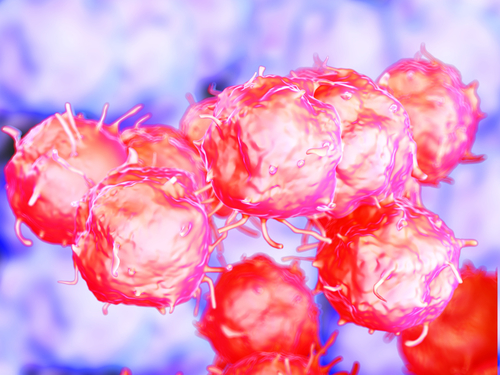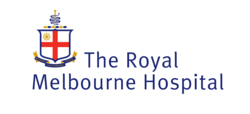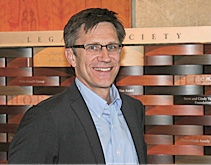Are Parkinson’s Disease Stem-cell Therapies Finally Ready for Clinical Trials? It Depends, Some Say

Stem cell therapy, which many people living with Parkinson’s disease have long pinned hope on as a potential treatment or even a cure, is finally advancing to clinical trial stage. The recent announcement of a Phase 1/2a clinical trial involving transplantation of stem cells into the first human subjects is therefore raising hope among patients that an effective stem cell-based treatment for Parkinson’s may finally be just over the horizon. However, the announcement is also a subject of discussion and debate in the research community.
 Stem cells, described by The Michael J. Fox Foundation For Parkinson’s Research as a “renewable source of tissue that can be coaxed to become different cell types of the body,” help with maintenance and repair of body tissues by becoming specialized cell types of the tissue or organ where they originate, and are seen as having “potential to significantly impact the development of disease-modifying treatments for Parkinson’s disease.”
Stem cells, described by The Michael J. Fox Foundation For Parkinson’s Research as a “renewable source of tissue that can be coaxed to become different cell types of the body,” help with maintenance and repair of body tissues by becoming specialized cell types of the tissue or organ where they originate, and are seen as having “potential to significantly impact the development of disease-modifying treatments for Parkinson’s disease.”
Parkinson’s disease (PD) is the second most common neurodegenerative disease — a chronic, degenerative neurological disorder, mainly affecting the motor system, caused by a shortage of the brain chemical dopamine that enables messages to be sent to the parts of the brain that control movement and some forms of thinking. Parkinson’s, which is currently incurable, affects approximately one in 100 people over the age of 60. Numbers of people living with the disease are estimated to be at least one million in the U.S. and five to seven million worldwide.
Currently, standard medications used to treat Parkinson’s, L-DOPA and dopamine agonists, improve early symptoms of the disease, but as it progresses and dopaminergic neurons continue to be lost, the drugs eventually become ineffective while at the same time frequently produce a complication that results in involuntary writhing movements.
Scientists are investigating how regenerative medicine and stem cell science could be used to treat or prevent Parkinson’s disease, and while the disorder’s underlying cause is still unknown, researchers do know which cells and areas of the brain are involved, and have been experimentally successful in using stem cells to grow dopamine-producing nerve cells in the lab.
However, the Fox Foundation cautions that while stem cell research has the potential to significantly impact development of disease-modifying treatments for Parkinson’s, there are “many challenges that need to be overcome before stem cell-based cell replacement therapies for Parkinson’s disease are a reality. Work is still needed to generate robust cells, in both quality and quantity, that can also survive and function appropriately in a host brain. Although ES (and now iPS) cells hold great potential, we do not yet know which stem cell type ultimately holds the greatest promise.”
The authors of a commentary published in the Journal of Parkinson’s Disease propose five key questions that they say should be addressed as the clinical trial announced by California-based biotech company International Stem Cell Corporation (ISCO) begins.
 ISCO announced on March 7 that it is now enrolling patients in the Phase 1 trial of the company’s proprietary ISC-hpNSC, which consists of a highly pure population of neural stem cells derived from human parthenogenetic stem cells manufactured under cGMP conditions that have undergone stringent quality control measures and are clear of any microbial and viral contaminants.
ISCO announced on March 7 that it is now enrolling patients in the Phase 1 trial of the company’s proprietary ISC-hpNSC, which consists of a highly pure population of neural stem cells derived from human parthenogenetic stem cells manufactured under cGMP conditions that have undergone stringent quality control measures and are clear of any microbial and viral contaminants.
They report that preclinical studies in rodents and non-human primates have shown improvement in Parkinson’s disease symptoms and increase in brain dopamine levels following intracranial administration of ISC-hpNSC, which provides neurotrophic support and cell replacement to the dying dopaminergic neurons of the recipient Parkinson’s brain. ISCO says ISC-hpNSC are safe, well tolerated, and do not cause adverse events such as dyskinesia, systemic toxicity or tumors in preclinical models, and that it believes ISC-hpNSCmay have broad therapeutic applications for many neurological diseases affecting the brain, the spinal cord and the eye.
 The clinical trial is to be conducted at Royal Melbourne Hospital in Australia. ISCO says the Melbourne Health Human Research Ethics Committee (HREC) has granted its approval of the Phase 1 clinical trial in patients with moderate to severe Parkinson’s disease. This approval clears the study’s initiation at the Royal Melbourne Hospital.
The clinical trial is to be conducted at Royal Melbourne Hospital in Australia. ISCO says the Melbourne Health Human Research Ethics Committee (HREC) has granted its approval of the Phase 1 clinical trial in patients with moderate to severe Parkinson’s disease. This approval clears the study’s initiation at the Royal Melbourne Hospital.
ISCO describes the Phase 1 clinical study as a dose escalation safety and preliminary efficacy study of ISC-hpNSC, intracranially transplanted into patients with moderate to severe Parkinson’s disease. The open-label, single center, uncontrolled clinical trial will evaluate three different dose regimens of 30,000,000 to 70,000,000 neural cells. Twelve participants with moderate to severe Parkinson’s disease will be treated. Following transplantation, the patients will be monitored for 12 months at specified intervals to evaluate the safety and biologic activity of ISC-hpNSC. PET scans will be performed at baseline as part of the screening assessment, and at 6 and 12 months after surgical intervention. Clinical responses compared to baseline after the administration of ISC-hpNSC will be evaluated using various neurological assessments such as Unified Parkinson Disease Rating Scale (UPDRS), Hoehn and Yahr, and other rating scales.
Russell Kern, Ph.D., executive vice president and chief scientific officer of ISCO, said in a release that “Enrollment in this trial is an important milestone. Promising preclinical results support our expectation that ISC-hpNSC will bring a long-needed solution for patients suffering from Parkinson’s disease. The ability of our approach to replace and protect dopaminergic neurons and restore neural function offers significant potential benefit to patients. We look forward to preliminary clinical data in [the fourth quarter] of 2016.”
The Journal of Parkinson’s Disease research Open Access article, titled “Are Stem Cell-Based Therapies for Parkinsons Disease Ready for the Clinic in 2016?” co-authored by Roger A. Barker, Malin Parmar, Agnete Kirkeby, Anders Bjorklund, Lachlan Thompson, and Patrik Brundin, representing neuroscience research institutions in the U.K., Sweden, Australia, and Michigan, observe that based on discussions held by a global collaborative initiative on translation of stem cell therapy in Parkinsons disease, they have arrived at a set of five key questions they believe should be addressed before any stem-cell-based trial in Parkinson’s disease is done:
1) What is being transplanted, and what is the proposed mechanism of action?
2) What are the pre-clinical safety and efficacy data supporting the use of the proposed stem cell product?
3) Can arguments concerning ethics, risk mitigation, or trial logistics outweigh concerns regarding the expected efficacy of the cell and constitute a primary justification for choosing one cell type over another in a clinical trial?
4) What is being claimed regarding the potential therapeutic value of the stem cell-based therapy — better control of symptoms or a cure?
5) What is the regulatory oversight of the trial and is it guided by input from experts in the field?
In their article, the co-authors first review a short history of cell therapy associated with Parkinson’s disease and briefly describe the cutting-edge science regarding human stem cell-derived dopamine neurons for use in any patient trial. With this background information as a foundation, they then discuss each of the key questions in relation to the ISCO trial and critically assess whether the time is ripe for clinical translation of parthenogenetic stem cell technology in Parkinson’s disease.
 The authors observe that with stem cell-based therapies now approaching the clinical trial stage in a number of centers, active groups in the field have established a global collaborative stem cell therapy advocacy initiative called G-Force PD to collaborate on translation of laboratory findings to trials in order to ensure optimal progress from experimental results toward the clinic. The aim of the consortium is to define criteria by which to gauge their own progress toward the clinic, while ensuring that all steps are conducted to the highest standard and that the trials are not initiated prematurely.
The authors observe that with stem cell-based therapies now approaching the clinical trial stage in a number of centers, active groups in the field have established a global collaborative stem cell therapy advocacy initiative called G-Force PD to collaborate on translation of laboratory findings to trials in order to ensure optimal progress from experimental results toward the clinic. The aim of the consortium is to define criteria by which to gauge their own progress toward the clinic, while ensuring that all steps are conducted to the highest standard and that the trials are not initiated prematurely.
For example, how does ISCO’s clinical transplantation trial in Parkinson’s fare in light of the criteria defined by the G-Force-PD consortium? In their article, the authors discuss publicly available information regarding the ISCO trial, expressing some concern regarding missing or incomplete information available from ISCO, noting in particular there are concerns that the cell types being transplanted may not function as desired; that supporting safety and efficacy data have not been made public; and that the G-Force PD consortium also suggests the length of follow-up in the ISCO trial may not be sufficient.
They acknowledge that “while early claims suggesting the possibility of a cure had been made,” ISCO has now taken what they deem is a “more measured position regarding potential benefits.”
Nevertheless, the authors caution that exaggerated claims pertaining to stem cell therapy are all too common in the field given the regulatory hurdles, commercial interests, and personal ambitions of participants in early-stage clinical trials. They divide their discussion into five sections responding to each of the questions they’ve have posed.
In their concluding remarks, the Journal of Parkinson’s Disease article authors observe that as the ability of scientists to make authentic midbrain dopaminergic neurons from stem cell sources improves, so does the reality of a first in human clinical trials on patients with Parkinson’s. And while that’s an exciting prospect, they contend it’s one that should only be undertaken after all necessary pre-clinical data and regulatory approvals have been obtained and verified, and criteria for moving those cells to trials are fully resolved and met, criteria that are currently a major focus of the GForce-PD consortium.
They observe: “Only too often are exaggerated claims made, based on limited pre-clinical data and a desire to pass the financial and regulatory hurdles needed to get to clinic, sometimes driven by personal ambitions along with financial and commercial interests.”
 “Many PD patients and their families have questioned whether they should try to sign up for such a study. As with many such exiting news items, however, one should also react with caution, especially since the outcome of this trial can affect the development of other stem cell programs moving toward clinical trials,” explains the article’s lead author, Roger A. Barker, Ph.D., of the John van Geest Centre for Brain Repair, Department of Clinical Neurosciences, at the University of Cambridge in England, in a news release.
“Many PD patients and their families have questioned whether they should try to sign up for such a study. As with many such exiting news items, however, one should also react with caution, especially since the outcome of this trial can affect the development of other stem cell programs moving toward clinical trials,” explains the article’s lead author, Roger A. Barker, Ph.D., of the John van Geest Centre for Brain Repair, Department of Clinical Neurosciences, at the University of Cambridge in England, in a news release.
Barker noted it is timely to provide insights into how the opportunities provided to Parkinson’s patients in the ISCO trial and similar trials should be evaluated, maintaining that without such insight, the patient community is left trying to interpret complex scientific issues on its own, and will be unable to make informed decisions about whether they should try to participate in the planned trials.
 With the reality of the first human clinical trial in patients with PD upon us, says co-author and Journal of Parkinson’s Disease Editor-in-Chief Patrik Brundin, M.D., Ph.D., who is also director of the Center for Neurodegenerative Science at the Van Andel Research Institute in Grand Rapids,
With the reality of the first human clinical trial in patients with PD upon us, says co-author and Journal of Parkinson’s Disease Editor-in-Chief Patrik Brundin, M.D., Ph.D., who is also director of the Center for Neurodegenerative Science at the Van Andel Research Institute in Grand Rapids,  Michigan, “This is an exciting prospect but should only be undertaken when all the
Michigan, “This is an exciting prospect but should only be undertaken when all the
necessary pre-clinical data and regulatory approvals have been obtained and verified and the criteria for moving those cells to trials fully resolved and met. Acting prematurely has the potential not only to tarnish many years of scientific work, but can threaten to derail and damage this exciting field of regenerative medicine. Hopefully, in 2016, we are ready to take a more careful approach as we strive to repair the PD brain with stem cell-based therapies, avoiding many of the mistakes that have dogged this field over the last three decades.”






